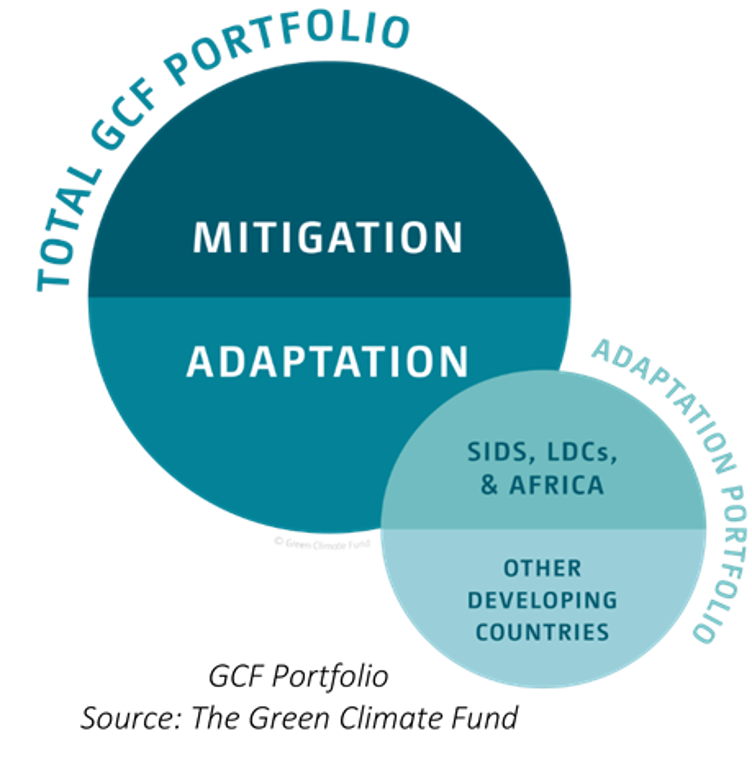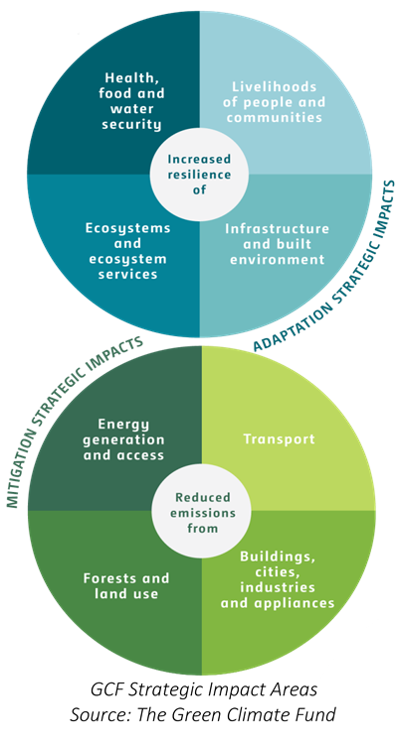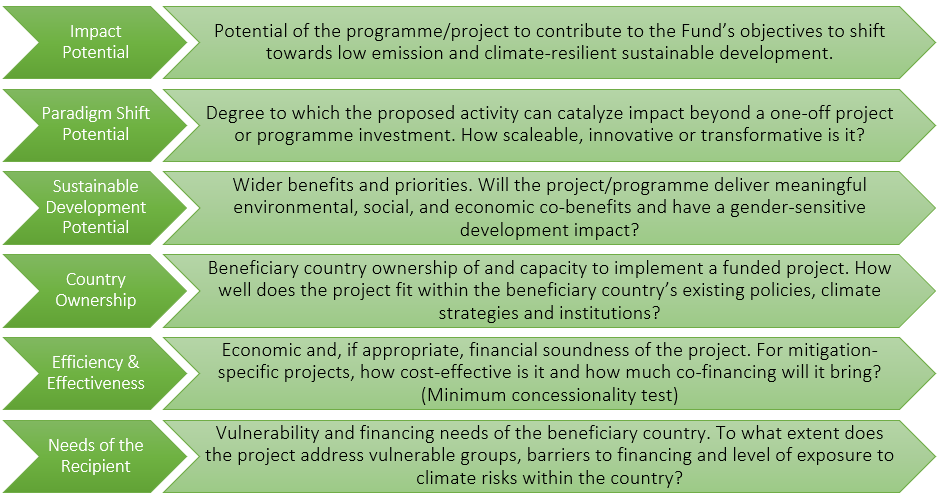The Green Climate Fund (GCF) is the largest global climate fund. It was established in 2010 as a financial mechanism of the United Nations Framework Convention on Climate Change (UNFCCC) to support the efforts of developing countries to respond to the challenge of climate change.
The main goal of the GCF is to help developing countries limit or reduce their greenhouse gas (GHG) emissions and adapt to climate change and to promote a paradigm shift to low-emission and climate-resilient development. The GCF has the important role of serving the Paris Agreement and supporting the goal of keeping climate change well below 2 degrees Celsius above pre-industrial levels and pursuing efforts to limit the temperature increase to 1.5 degrees Celsius above pre-industrial levels.
The architecture of the GCF and its activities are aligned with the priorities of developing countries through the principle of country ownership – fundamentally grounded through each country’s National Designated Authority (NDANational Designated Authority : A core interface and the main point of communica... More). The NDANational Designated Authority : A core interface and the main point of communica... More is the fundamental intermediary and point of communication between a country and the Fund, responsible for ensuring activities proposed for support by the Fund align with strategic national objectives and priorities.
One of the distinct and differentiating features of the Fund is its direct access modality that was established to allow national and sub-national organisations to receive funding directly, rather than only via intermediaries. This modality supports the cornerstone of the Fund’s operation – country ‘drivenness’ and ownership – and was designed to help developing countries exercise ownership over climate finance.
The Fund is mandated to aim for a 50:50 balance in investments between mitigation and adaptation over time. It also aims for a floor of 50% of the adaptation allocation for particularly vulnerable countries, including Least Developed Countries (LDCs), Small Island Developing States (SIDSSmall Islands Developing States: A distinct group of developing countries facing... More), and African States.
GCF Portfolio | Source: The Green Climate Fund
To date, the fund has secured more than USD 10 billion in pledges and continues to mobilise resources on an ongoing basis to ensure that the Fund has resources to support projects and programmes in its funding proposal pipeline. While the Fund is mandated, as outlined above, to aim for the stated balances and allocations, projects and programmes are approved by the GCF Board on a rolling basis, dictating a first come first served basis. For a country to be successful in accessing resources is therefore essential for the NDANational Designated Authority : A core interface and the main point of communica... More to have adequate capacity to carry out its functions and to also be proactive in their engagement with the Fund.
The GCF finances projects and programmes that are in line with its Results Management Framework (RMF). The RMF defines eight strategic impacts to be achieved at the Fund level – four of which are mitigation focused and four adaptation focused. When developing a project or programme, one or several of these impact areas can apply.
The GCF actively promotes synergies across areas of adaptation and mitigation and promotes environmental, social, economic and development co-benefits. It also strongly supports projects and programmes with a gender-sensitive and gender-responsive approach. If persons believe these projects will have adverse impacts, complaints are assessed by the Independent Redress Mechanism.
The GCF has established six criteria in its Investment Framework to guide the manner in which it takes decisions on its investments.
- Impact Potential
- Paradigm Shift Potential
- Sustainable Development Potential
- Country Ownership
- Efficiency and Effectiveness
- Needs of the Recipient
GCF Investment Criteria
The Fund’s investments can be in the form of grants, loans, equity or guarantees. This enables the Fund to match the project needs and adapt to specific investment contexts, including using its funding to overcome market barriers for private finance. The ultimate goal of each of the instruments is to mitigate the project or programme risks and create more favourable conditions, thereby unlocking the prospect for leveraging of additional financing.
To find out how to access the GCF’s resources, click here.
To view the Green Climate Fund Country Page for Grenada, click the link below.
Water Conservation Plans – A Climate Resilience Measure
Most health centres that have undergone a SMART Hospital assessment…
2nd NDC Investment Forum Working Session: Enabling access to carbon markets: objectives, opportunities and policy options
From July 5 – 7, 2022 the Caribbean NDC Finance…
Grenada launches Cool Contributions fighting Climate Change II (C4 ll)
World Ozone Day 2022 Celebrations in Grenada In the context…
- « Previous
- 1
- 2



